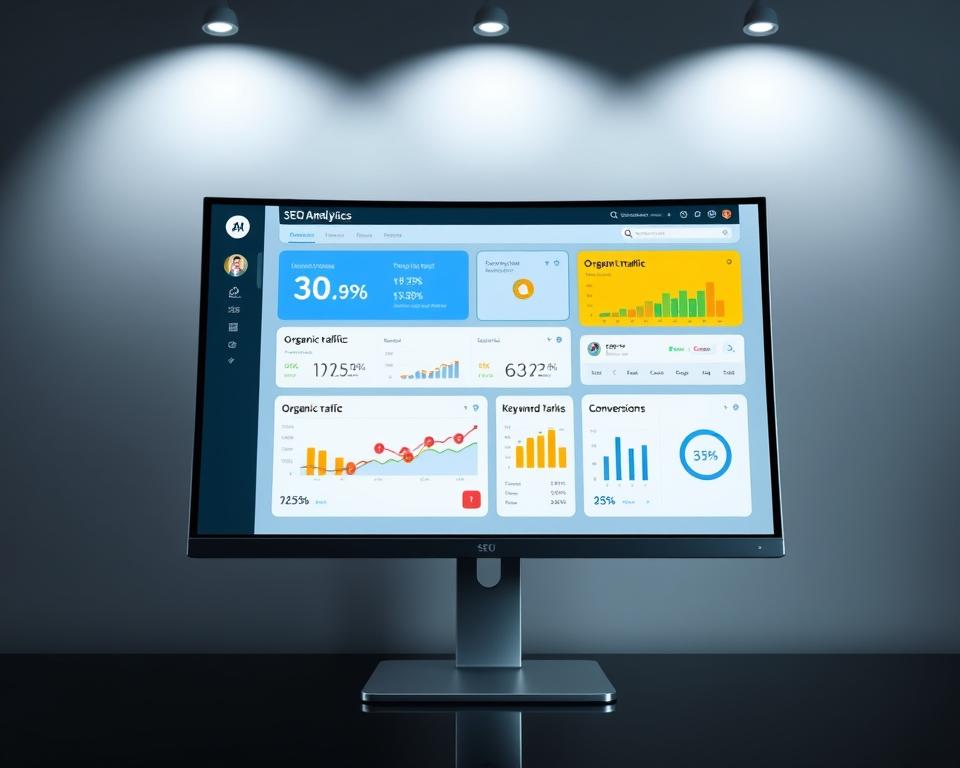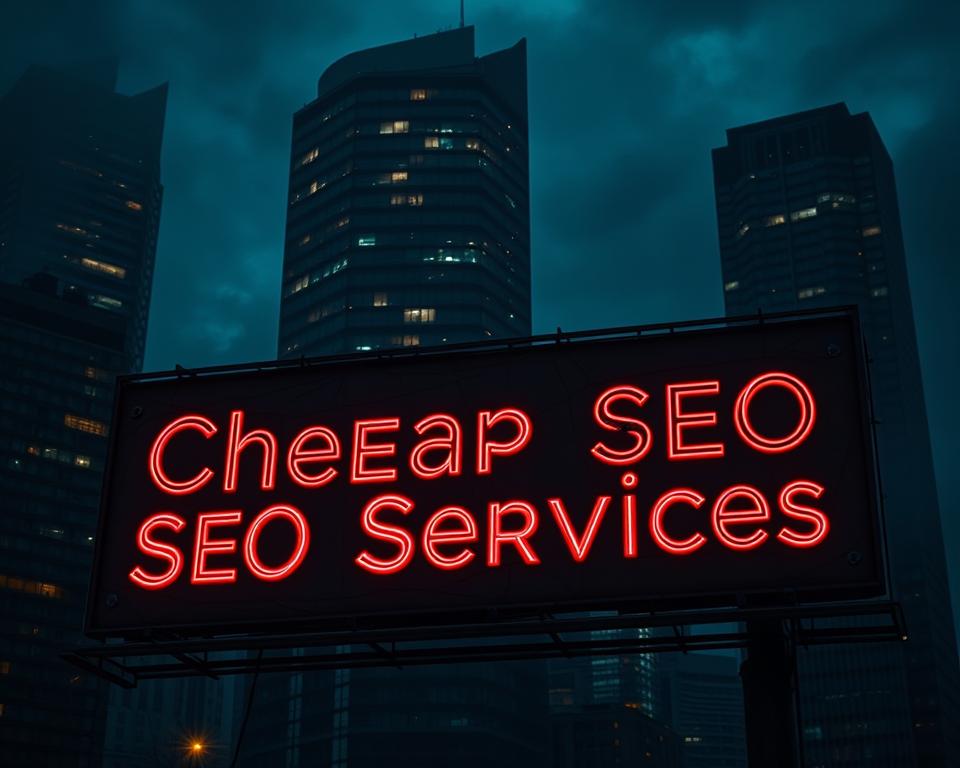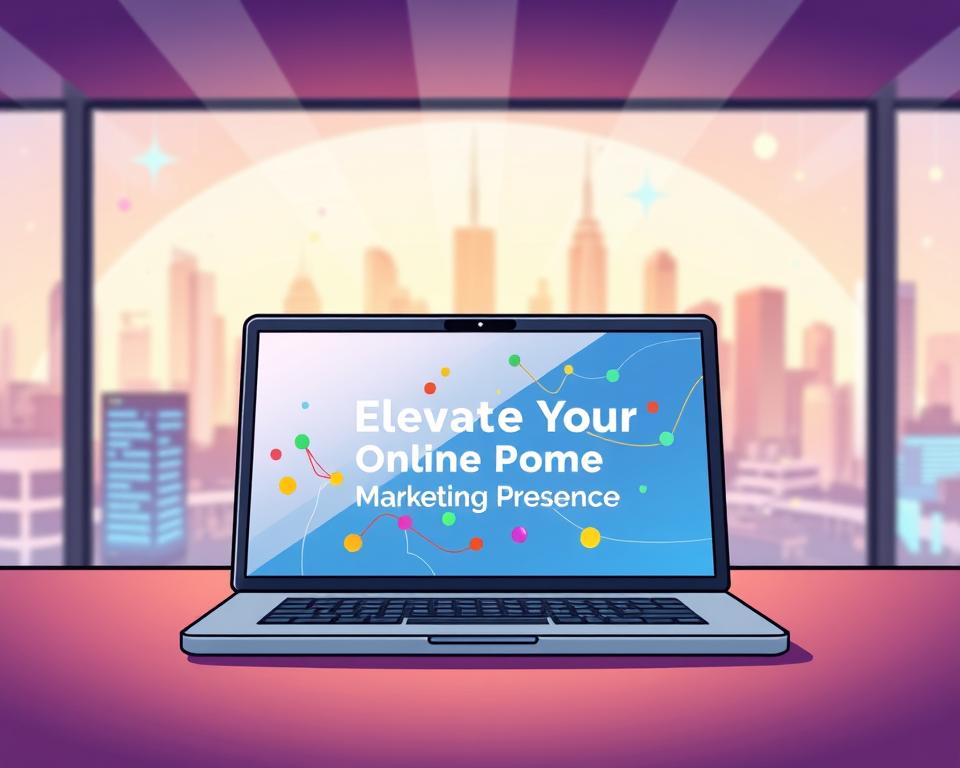Expand Your Progress: Benefits of SEO for Local Companies
Sarah gazed at her laptop, feeling stuck. The previous week, a mere dozen visitors had reached her artisan-jewelry page. She kept asking herself why audiences weren’t arriving. Then she learned a startling statistic: More than half—53.3 %—of site visits begin via unpaid search. This revelation marked a turning point for her.
Similar to Sarah’s experience, you may be unaware that Google launches most customer journeys. Roughly 90 % of global traffic rides on Google’s ecosystem. Unlike traditional ads, which quickly deplete your budget, organic visibility endures. With guidance from SEO Marketing Nerds, Sarah optimized her pages and tripled traffic—no paid ads—thanks to small business SEO packages.
This success isn’t about magic—it’s about strategic digital positioning. Many community firms miss that engines prioritize useful, pertinent information. You don’t need to spend a fortune on ads to rank higher. Surveys find searchers deem organic outcomes eight times more reliable than paid.
Time to bust the myth that optimization is impossibly complicated. The correct approach lets specialty ventures command their space. The website turns into an always-on sales machine, pulling target customers continuously. Ready to discover how?
Why Small Businesses Can’t Afford to Ignore SEO
Visualize challenging titans while wielding a mere 1 % of their ad purse. SEO evens the odds for smaller outfits. Given that 93 % of digital sessions kick off in search, page-one presence shifts from helpful to vital.
Grasping Today’s Shopper Habits
Customers don’t merely search—they decide fast. Stats reveal 76 percent of smartphone searchers arrive at a business within a day. Miss the first page, and 75 percent of buy-ready locals never see you.
User searches uncover rich findings:
- Roughly 61 % of mobile searches lead to phone calls to businesses
- 89% of shoppers research online before visiting stores
- 53% of website traffic comes from organic search
| Metric | SEO | Paid Ads |
|---|---|---|
| Cost per lead (30-day avg) | $27 | $198 |
| Lead-to-sale conversion | 14.6% | 1.7% |
| Traffic sustainability | 18-24 months | Immediate drop-off |
The Online Equal-Ground Mechanism
SEO turns domain authority into a powerful tool. Big brands pour ten grand a month into ads, yet small businesses still net 5× the local clicks. With simple tech adjustments, an Austin pastry shop lifted traffic 317 % and topped national chains for “fresh croissants near me.”

We observe three core payoffs:
- Steady visibility free of daily ad costs
- Trust signals from Google’s algorithm
- Sharp targeting using detailed keyword phrases
Seven Core Advantages of SEO in Growing Small Businesses
Plenty of founders look for instant hits through social platforms. Conversely, SEO provides exponential payoff reshaping customer acquisition. Here are three pivotal perks that render optimisation vital for enduring expansion.
1. Wallet-Smart, Laser-Focused Outreach
Unlike PPC, SEO won’t rapidly sap funds. It attracts customers ready to buy through targeted keywords. Case in point: a Chicago bakery, by focusing on “gluten-free birthday cakes Chicago,” cut lead costs 63 % versus broad PPC users.
Featured answer boxes heighten the upside. Firms in that placement enjoy twice the clicks with no added expense.
2. Upgraded Nearby Exposure
Twenty-eight percent of nearby searches convert to sales in a day, underscoring the need to optimize your Google Business Profile. Secure your profile and post images to raise map-pack appearance by forty-one percent. Aim at hyper-local terms to top results for queries such as “emergency HVAC repair near me.”
| Marketing Channel | Cost Per Lead | Conversion Rate | ROI Timeline |
|---|---|---|---|
| SEO | $25-$50 | 14.6% | 6-12 months |
| PPC Ads | $75-$200 | 3.9% | Immediate |
| Direct Mail | $150-$300 | 1.2% | 3-6 months |
3. Authority via Search Leadership
Google’s E-A-T guidelines reward firms demonstrating sector expertise. One plumbing firm publishing maintenance articles landed 3 × the backlinks of competitors. That broadcasts authority to search bots.
This trust factor is powerful. Roughly four-fifths of users choose the top organic trio, considering them more reliable than sponsored links.
How Small-Business Websites Harness SEO
Effective SEO for small business sites requires a harmonious blend of three critical components. From on-page copy to backend build, they sway search standings. Knowing them fuels achievement.
On-Page Optimization Fundamentals
Kick off by adjusting items under your command on site. Algorithms inspect such markers to measure topical match. Pay attention to these facets:
| Element | Best Practice | Tools |
|---|---|---|
| Title Tags | Keep under 60 characters with primary keywords first | SEMrush, Yoast SEO |
| Meta Descriptions | Write 150-160 character summaries with clear CTAs | Moz Pro, All-in-One SEO |
| Header Tags | Use H1 for page titles, H2/H3 for subheadings | Screaming Frog, SurferSEO |
Polish text for visitors and spiders. Include keywords naturally in headers and body text, but avoid overstuffing. Google Search Console is invaluable for tracking performance and identifying areas for improvement.
Authority-Building Off-Page Tactics
Grow clout via outside signals. Example: a roofing firm in Phoenix could:
- List in Angi (formerly Angie’s List) and HomeAdvisor directories
- Publish guest posts on construction industry blogs
- Earn mentions from local news outlets covering home improvement trends
Quality is more important than quantity. Just one .edu backlink often tops ten low-grade links. Audit links regularly to remove junk.
Technical SEO Requirements
Guarantee search bots access and indexability. Important back-end factors include:
- Mobile Optimization: 58% of searches occur on mobile devices (Source 3). Use Google’s Mobile-Friendly Test tool
- Core Web Vitals: Enhance loading speed, interactivity, and visual stability (Source 1)
- XML Sitemaps: Assist search engines in discovering new pages faster
Apply SSL (HTTPS) to secure and improve rankings. Ahrefs helps locate and remedy broken links. Push revised sitemaps to Search Console on a monthly cycle.
Small Business SEO Cost Analysis
Knowing SEO expenses is essential for wise budgeting. It turns SEO from a mere expense into a source of revenue. Finding the sweet spot between do-it-yourself and hiring experts makes it possible.
DIY vs Professional Service Comparison
Handling SEO yourself can cost between $100-$500 a month for tools and learning. It requires a significant time investment, around 15-20 hours each week. Conversely, agencies bill $750 to $3 k monthly. SEO Marketing Nerds, a specialist, starts at $899/mo with open pricing.
| Cost Factor | DIY Approach | Agency Service |
|---|---|---|
| Initial Setup | $200 (tools + courses) | $0 (included in packages) |
| Monthly Management | 20 hours labor | 3-5 hours oversight |
| ROI Timeline | 9-12 months | 4-6 months |
Setting Budgets for Peak Payback
Project ROI via:
SEO ROI = [(Monthly Organic Revenue – SEO Cost) / SEO Cost] x 100
Suppose you put $2 500 monthly:
- Traffic growth: 40-60% in 6 months
- Lead generation: 8-12 new contacts/week
- Revenue impact: $7,500-$12,000/month
Pricing at SEO Marketing Nerds scales as you grow:
- Starter: $899/month (local SEO focus)
- Growth: $1,499/month (national campaigns)
- Enterprise: Custom solutions
Choosing the Right SEO Partner: Why SEO Marketing Nerds Stand Out
Choosing an SEO agency is more than just hiring someone; it’s about finding a partner who gets your business. With 73% of small businesses facing challenges in finding reliable partners, SEO Marketing Nerds stands out. They offer customized strategies and clear financial plans, redefining what collaboration means.
Tailored Solutions for Small Enterprises
Standard SEO templates fail nearly nine-tenths of SMBs, according to studies. SEO Marketing Nerds tackles this with:
- Micro-niche keyword mapping targeting specific customer needs
- Localized content hubs addressing regional search patterns
- Competitor gap analysis identifying untapped opportunities
Their unique penalty recovery system helped a Chicago bakery regain 142% of its organic traffic after facing Google penalties. These bespoke strategies speed rankings 68 % beyond averages.
Straightforward Cost Frameworks
Wave farewell to unexpected fees. Modular pricing from SEO Marketing Nerds means cost control and scalable gains:
| Service Tier | Core Features | Typical Investment |
|---|---|---|
| Starter | Basic keyword optimization, monthly reports | $750-$1,200/mo |
| Growth | Local SEO, content strategy, technical audits | $1,500-$2,500/mo |
| Enterprise | Full-service SEO, dedicated account manager | $3,000-$5,000/mo |
Each agreement includes performance targets and opt-out clauses—rare in small-business SEO. Offering refunds on missed KPIs signals firm confidence.
Local SEO: The Breakthrough for Neighborhood Companies
Fact: 72 % of buyers opt for businesses just five miles away. For nearby vendors, local SEO changes the game. It transforms how you connect with nearby buyers. It’s more than tweaks—goal is being the go-to for “plumber near me” or “best coffee shop downtown.”
Optimizing for “Near Me” Searches
Think of your GBP as a digital shop window. Complete every section with:
- Accurate business hours and holiday schedules
- Services menu with detailed descriptions
- High-quality photos updated quarterly
- Posts about weekly specials or events
Reliable citations enhance pack positioning. Focus on three types:
- General platforms (Yelp, Angi)
- Industry-specific hubs (Healthgrades for medical practices)
- Community sites (Chamber of Commerce listings)
Handling Digital Reputation
Review count and quality shape local rank. Apply the following response plan:
| Platform | Response Time | Key Strategy |
|---|---|---|
| 24-48 hours | Address specific service mentions | |
| Yelp | 72 hours max | Highlight community involvement |
| Same day | Use casual, conversational tone |
Sentiment analysis tools like ReviewTrackers help spot trends in customer feedback. Address repeating complaints swiftly since 89 % of customers view responses.
Content & SEO Working Together
Unlocking your content’s full power requires blending it with SEO tactics. Given 44 percent of income comes via organic, strategies must merge. Optimized content and technical SEO create a growth engine that boosts authority and drives conversions.
Crafting Search-Ready Content
Kick off with a content review via SEMrush or similar. Spot holes where rivals rank yet you don’t. Proceed through these three actions:
- Map existing content to relevant keywords
- Cluster related topics into pillar pages
- Optimize for voice search by adding FAQ schema markup
Service-page revamps gave HVAC companies a 37 % lead surge. Their pillar page “AC Repair” linked to sub-pieces on coolant leaks, thermostat errors, etc. This signals topical authority to search engines.
Aligning With Intent
EEAT emphasizes syncing answers to user purpose. Assess the following intents:
- Informational (“how to clean gutters”)
- Navigational (“best CRM software”)
- Commercial (“WordPress vs Squarespace pricing”)
- Transactional (“buy ergonomic chair near me”)
Convert posts to lead magnets via upgrades. Recipe card downloads boosted bakery emails 29 %. Provide swift answers (under 100 words) to win snippets.
Remember: Great SEO content solves problems before selling solutions. Refresh old posts each quarter with updated terms. See organic exposure rise steadily.
Technical SEO: Your Unseen Accelerator
Keywords and copy receive attention, but technical SEO covertly lifts your site. It’s like the digital foundation of your site – get it right, and all other marketing efforts become more potent. Let’s explore under-the-hood measures letting small firms outpace rivals.
Best-Practice Site Structures
An orderly site guides engines like a compass. Begin by categorizing content into silos, grouping related topics together. For instance, a bakery might have separate sections for “Wedding Cakes,” “Artisan Breads,” and “Seasonal Treats.” Such layout eases discovery for users and engines.
- Keep navigation menus shallow (3 clicks to any page max)
- Use breadcrumb trails for multi-level content
- Implement internal linking between related posts
Security & Speed Optimization
Safety plus speed win Google’s favor. Bear in mind: 53 % of smartphone users vanish if pages exceed 3 s load. Kick off with HTTPS using the following process:
- Purchase an SSL certificate from your hosting provider
- Install and activate the certificate
- Update all internal links to HTTPS
- Set up 301 redirects for old HTTP pages
Accelerate pages with these methods:
- Enable compression for CSS/JavaScript files
- Implement lazy loading for images
- Use a CDN to serve content from nearest servers
Tools like GTmetrix track your site’s performance, while free plugins like WP Rocket streamline many speed enhancements. Remember, mobile-friendly SEO is essential, as 61% of searches are done on smartphones. Run Google’s Mobile-Friendly Test weekly to ensure responsiveness.
Tracking SEO Wins: Vital KPIs
Tracking SEO progress turns vague efforts into actionable insights. Benchmarks show victories and tweaks needed. The two measurement pillars are user behavior and concrete results.
Organic-Traffic Review
Google Analytics 4 (GA4) shows how users find your site. First build dashboards tracking sessions, bounce, pages. Use advanced segments to filter data, separating local searches from national traffic. It refines plans for each audience set.
Apply multitouch models for engagement insights. Such as:
- First-click attribution: Identifies initial discovery points
- Time-decay models: Highlights content influencing conversions
- Position-based models: Balances first/last interactions
| Attribution Model | Touchpoints Considered | Best For |
|---|---|---|
| Last Click | Final interaction | Short sales cycles |
| Linear | All interactions | Content-heavy strategies |
| Position Based | First + last clicks | Brand awareness campaigns |
Improving Conversions
Conversions prove your SEO drives real business value. ROI comes from CLV relative to costs. Say you spend $500 monthly; 10 customers at $1 000 yearly returns 1 900 %.
UTM coding tracks specific conversions. Format tags like:
- utm_source=google
- utm_medium=organic
- utm_campaign=spring-sale
Match rankings to conversions to spotlight valuable keywords. Console data shows click-rich queries. Visual heatmaps display engagement spots.
SEO Missteps Common in Small Businesses
Tiny mistakes can stunt growth within crowded searches. Here are two key traps and how to dodge them.
Keyword Over-Optimization Risks
Google’s Panda algorithm penalizes websites that force keywords unnaturally. Maintain density under 2-3 % to keep copy readable. Use Yoast or Surfer to monitor density.
Traffic fell 40 % for a bakery repeating the phrase 15 times. They reduced usage and inserted synonyms (“artisan pastries Manhattan”), regaining rank in eight weeks.
Neglecting Mobile Users
Since 61 percent of searches occur via mobile, Google favors mobile usability. Employ the Mobile Usability Report to spot:
- Text too small to read
- Clickable elements too close
- Unplayable content errors
Use Chrome’s emulation for responsive tests. Consider Accelerated Mobile Pages (AMP) for lightning-fast loading – news sites using AMP see 35% higher mobile engagement.
| Tool | Purpose | Key Benefit |
|---|---|---|
| Google Mobile-Friendly Test | Page-level mobile checks | Instant error detection |
| Search Console Core Web Vitals | Sitewide performance tracking | Identifies slow pages |
| AMP Validator | Accelerated Mobile Pages check | Ensures AMP compliance |
Wrapping It Up
Small businesses that focus on SEO enjoy 75% higher click-through rates than paid ads, as BrightEdge research reveals. Over time, advantages stack, transforming sites into constant growth engines. With content, tech, and local optimisation, visibility persists across changes.
Begin with free tools like Google Search Console for site audits. Growing quickly? Budget $500–$1.5k for professionals. SEO Marketing Nerds offers tailored solutions at clear prices, helping 92% of clients land on Google’s first page within six months. Conversion-centric expertise makes them ideal growth allies.
According to HubSpot, SEO grows small-biz revenue 22 % each year. Each tweak—from meta tags to architecture—fuels long-term wins. Organic growth and reduced bounces signal effectiveness.
Want to shift search visibility into reliable earnings? Schedule a no-cost call with SEO Marketing Nerds now. Their team designs data-driven campaigns that fit your budget and goals, proving SEO is not a cost but your most profitable growth channel.


